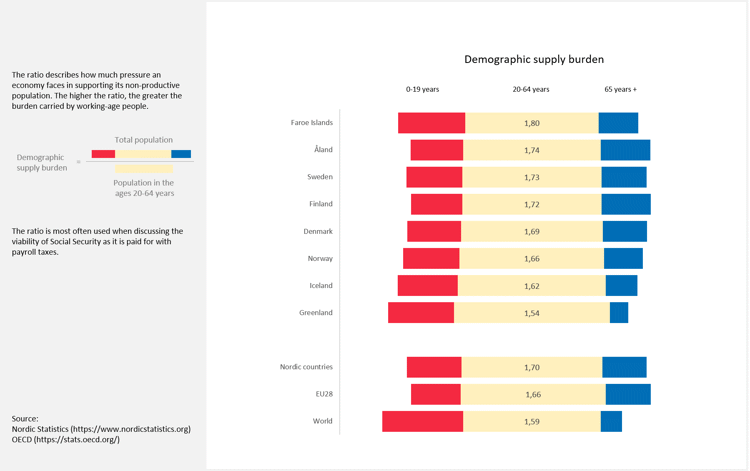Demographic supply burden varies between the Nordic countries
The demographic supply burden describes how much pressure an economy faces in supporting its non-productive population. For the Nordic countries it is highest in the Faroe Islands (1,80) and lowest in Greenland (1,54). This means that each person in the working-age population in the Faroe Islands on average supports 0,80 persons in addition to themself, while each person in the working-age population in Greenland on average supports 0,54 persons in addition to themself.
The demographic supply burden for the Nordics (1,70) is slightly higher than the one for EU28 (1,66) while it is lower on a worldwide basis (1,59).
As seen in the diagram below, the relative size of the younger group (red) and the older group (blue) to be supported by the working-age population (yellow) differs between the countries. For Finland, Åland, Sweden and Denmark, the proportions of the population in the younger group and the older group are almost the same, which is also the case for the Nordic region as a whole and for EU28. In Greenland the younger group is more than three times bigger than the older group, which is similar to what is seen on a worldwide basis.
